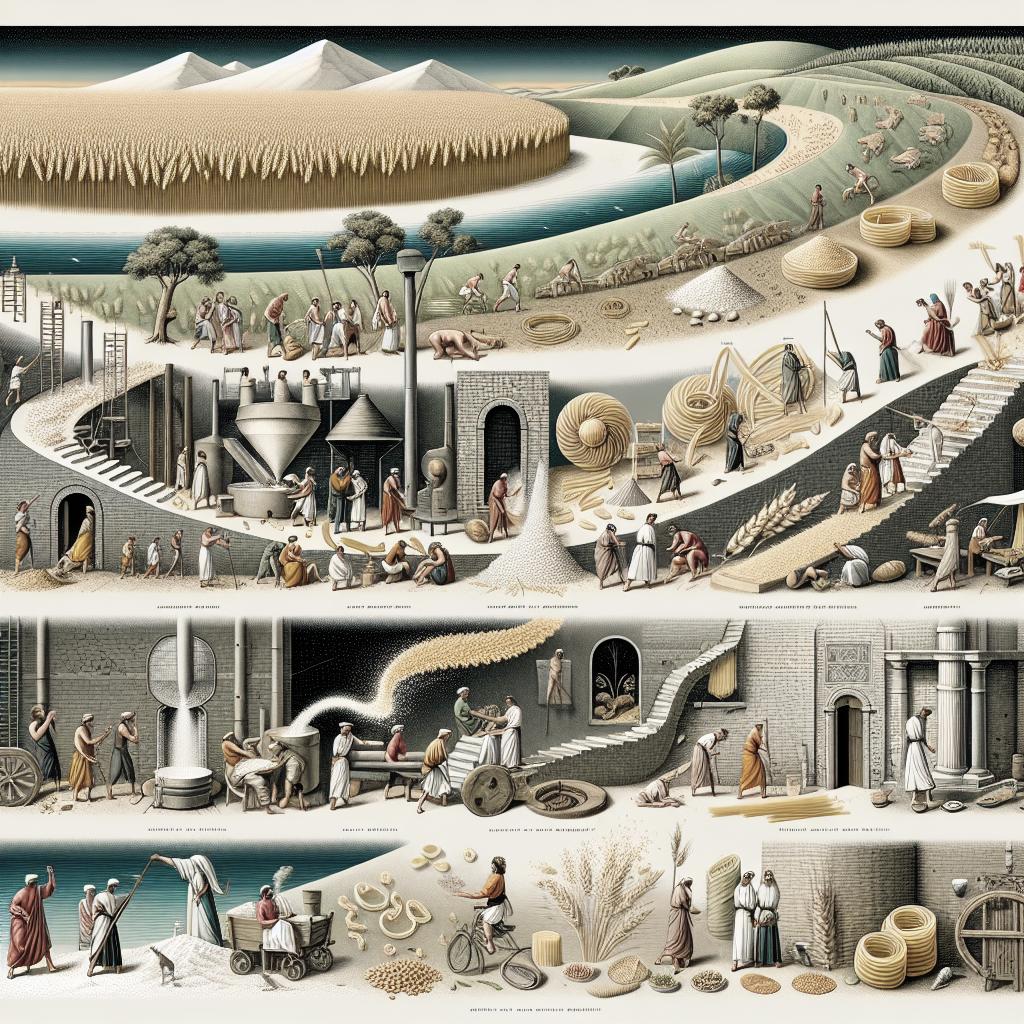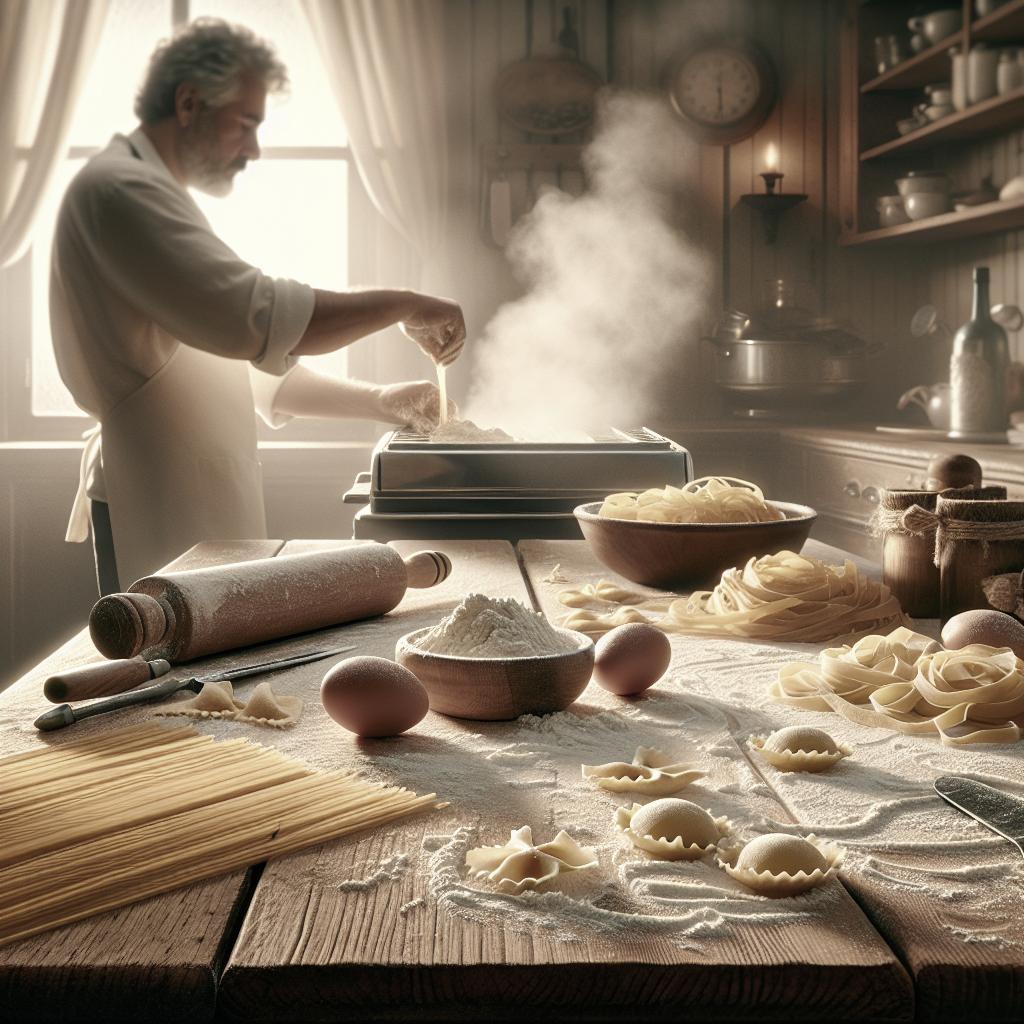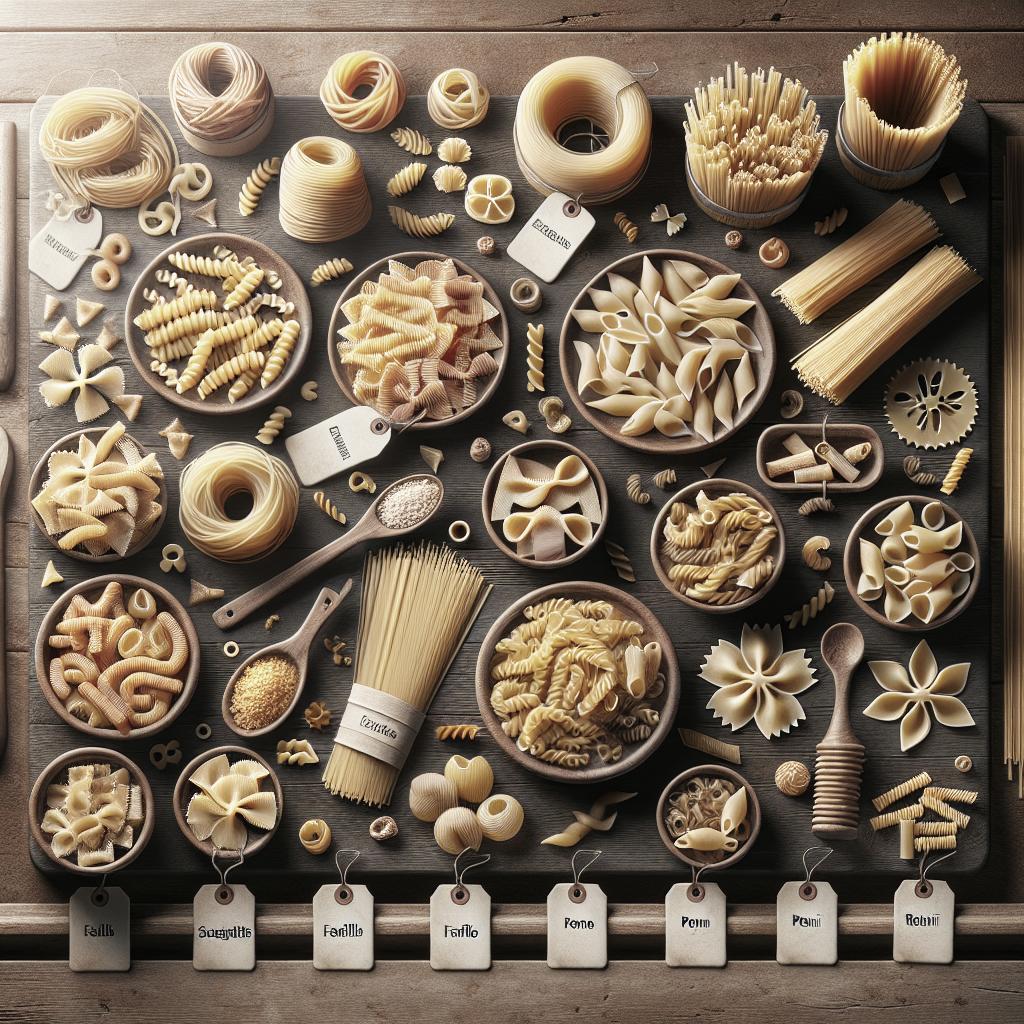“`html
The Origins of Pasta
Pasta, a beloved staple of Italian cuisine, boasts a rich and diverse history that’s as varied as its many shapes and sauces. This article delves into the origins of pasta, exploring its historical roots and cultural significance across different regions. We will look at the earliest references to pasta and examine its development in the Middle East and Mediterranean. The well-known tale of Marco Polo’s supposed introduction of pasta to Italy will also be discussed. Next, we’ll explore how the simple combination of wheat and water gave rise to a global culinary phenomenon. Finally, we’ll examine the variety of pasta cuts and their complementary sauces that have captivated food lovers worldwide. By the end, you’ll have a thorough understanding of how pasta has evolved and established its place as a culinary classic cherished by all.
The History of Pasta
The tale of pasta begins with ancient agricultural societies that discovered the versatility of wheat. Cultures from the Etruscans to the Greeks prepared a wheat-based dough, often flattening and drying it, which is considered an early form of pasta. Evidence points to Arabs introducing dried pasta resembling noodles to Sicily in the 9th century, due to its non-perishable nature, making it ideal for long journeys.
Though Italy elevated pasta to its iconic status, the initial concept of pasta came from elsewhere. Over centuries, pasta became intricately woven into Italian culture, with each region crafting unique shapes influenced by local ingredients. Pasta’s historical journey is a tale of cross-cultural interaction, innovation, and adaptability that set the stage for its rise in popularity across the globe.
Early References to “Pasta”
The word “pasta” has its linguistic roots in the Greek word “pastos,” meaning sprinkled with salt, later adopted by Latin cultures as “pasta.” Early documented mentions come from 12th-century Italy with “maccheroni,” which were pieces of dough boiled and consumed much like today. These records reveal a growing culinary interest in pasta as more than just nourishment.
Artifacts and texts from this era indicate that various types of pasta dishes were enjoyed by different classes. A 13th-century Arab geographer, Idrisi, detailed a dried noodle resembling modern-day pasta being produced in Sicily, highlighting its burgeoning role in society. These early references illustrate the beginning of pasta as both cuisine and a cultural symbol, eventually leading to its position alongside staples like bread and rice.
Pasta in the Middle East & Mediterranean
Pasta’s journey through the Middle East and Mediterranean showcases its adaptability and the abundant cultural exchange prevalent during this time. The Arabs, renowned traders, were integral in disseminating pasta to various regions due to their explorations and conquests. They crafted rudimentary noodle variants and enhanced them with spices, elevating the simple flour and water mix into a more sophisticated and desirable food.
The Mediterranean climate and agronomy played crucial roles in pasta’s development, providing the perfect conditions for durum wheat, a key ingredient in quality pasta. As pasta spread, local flavors mingled with this new food, integrating it into regional cuisines. These interactions significantly impacted pasta’s evolution, with Middle Eastern and Mediterranean influences still evident in pasta dishes today.
The Marco Polo Legend
One of the most enduring myths about pasta’s origins involves the legendary Venetian explorer, Marco Polo. According to popular lore, Polo came across pasta during his travels in China and introduced it to Italy upon his return in the 13th century. This tale, however, is historically debated and often dismissed by historians.
Substantial evidence predates Polo’s supposed introduction, indicating that while Marco Polo brought various insights from the East, pasta was already being consumed in Italy. Scholars propose he may have witnessed a variation of pasta-like noodles in China, but the continuity and development of pasta in Italy owe much to native innovations rather than foreign importation.
Pasta Today: Wheat and Water
At its core, pasta is the triumphant result of combining wheat and water, yet the end product is surprisingly diverse and complex. The use of durum wheat gives pasta its characteristic flavor and resilience, allowing it to be shaped and formed into hundreds of different styles. This simple yet adaptable recipe enabled pasta to travel and integrate into countless cuisines worldwide, becoming a blank canvas for creativity.
Beyond its humble beginnings, modern pasta manufacturing has adopted technology to streamline processes without sacrificing quality. Artisanal pasta focuses on traditional techniques and ingredients to preserve the authenticity that made pasta a timeless delicacy. The enduring marriage of wheat and water, enhanced by modern science and ancient tradition, maintains pasta’s esteemed status in gastronomy.
Cuts and Sauces
The sheer variety of pasta cuts corresponds with an equally impressive range of sauces, each combination bringing a new culinary experience. Long strands of spaghetti, intricate rigatoni, and delicate tortellini are but a few examples of how pasta’s shape dictates its ideal pairing. The sauce-pasta relationship is crucial, with thicker sauces calling for robust pastas and delicate ones requiring subtlety.
Italian culinary tradition celebrates the harmony of these pairings, which not only highlights the pasta’s texture but also complements its inherent flavors. From the rich, meaty ragù Bolognese to the creamy carbonara, sauces enhance the dining experience. It is this extensive variety and versatility that has endeared pasta to countless palates and cemented its place in both historical and contemporary kitchens.
Next Steps
| Sections | Description |
|---|---|
| The History of Pasta | Early farming roots and cross-cultural influences that shaped pasta’s initial development. |
| Early References to “Pasta” | Initial mentions in historical texts and the evolving significance of pasta in society. |
| Pasta in the Middle East & Mediterranean | Impact of trade and regional adaptations that contributed to pasta’s dissemination. |
| The Marco Polo Legend | Debunking the myth of Marco Polo introducing pasta to Italy. |
| Pasta Today: Wheat and Water | The fundamental recipe and evolution of pasta through technology and tradition. |
| Cuts and Sauces | The variety in pasta shapes and their traditional sauce pairings. |
“`


